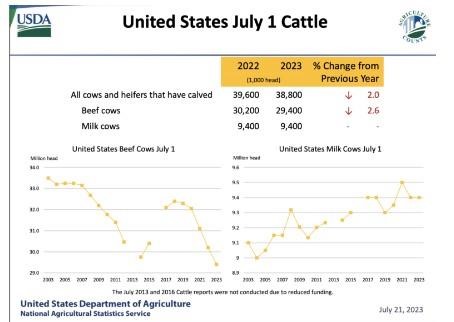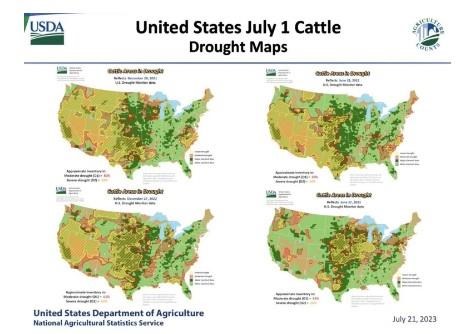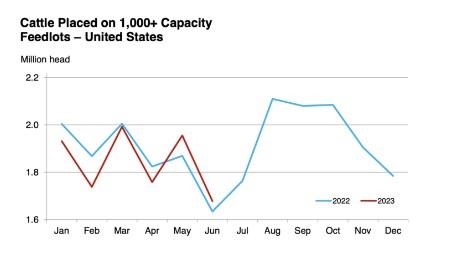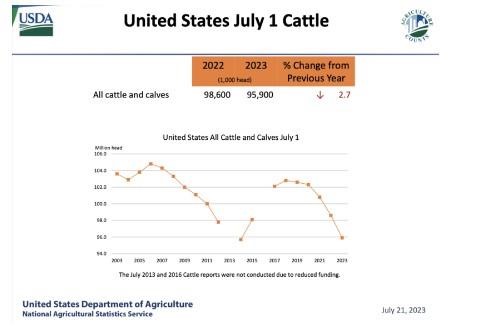By Keith Good
Reuters writer Tom Polansek reported on Friday that, “U.S. farmers are raising the fewest beef cows since at least 1971, government data released on Friday showed as drought conditions whittled herds, likely boosting costs for meatpackers that slaughter the animals into steak and hamburgers.
“There were 29.4 million beef cows as of July 1, down 2.6% from a year earlier, the U.S. Department of Agriculture said in a biannual report.

July Cattle. Agricultural Statistics Board Briefing, by Travis Averill, Chief Livestock Branch. USDA- National Agricultural Statistics Service (July 21, 2023).
“It was the smallest herd for that date since the government began keeping the records 52 years ago and reflected a fifth year of declining beef cow numbers.”
Polansek explained that, “Annual records of the herd size as of Jan. 1 go back farther, and the number of beef cows at the start of this year was the lowest since 1962 at 28.918 million head.
“Ranchers have increasingly sent cows to slaughter as dry weather reduced the amount of pasture available for grazing.”

July Cattle. Agricultural Statistics Board Briefing, by Travis Averill, Chief Livestock Branch. USDA- National Agricultural Statistics Service (July 21, 2023).
The Reuters article pointed out that, “The USDA, in a separate report, said producers placed 1.68 million cattle in feedlots in June to fatten them for slaughter, up 3% from 2022. Analysts, on average, had expected placements to decline 1.6% from last year.
“The increase signaled that there is still not enough pasture for cattle to graze on due to dry weather, so producers put the animals in feedlots instead, analysts said.”

Cattle on Feed. USDA- National Agricultural Statistics Service (July 21, 2023).
And Bloomberg writer Gerson Freitas Jr. reported on Friday that, “The American cattle herd shrank more than expected to the lowest seasonal levels since 2014, an indication that beef prices will remain high for at least another couple of years.

July Cattle. Agricultural Statistics Board Briefing, by Travis Averill, Chief Livestock Branch. USDA- National Agricultural Statistics Service (July 21, 2023).
“There were 95.9 million cattle as of July 1, down 2.7% from a year ago, the US Department of Agriculture said Friday in its biannual cattle-inventory report Friday. Analysts surveyed by Bloomberg expected a 2.3% decline.
“Years of drought, high feed costs and relatively low cattle prices have forced ranchers in the US to send cows to slaughter over the past few years, leading to a steep reduction in the size of their herds.”
Source : illinois.edu